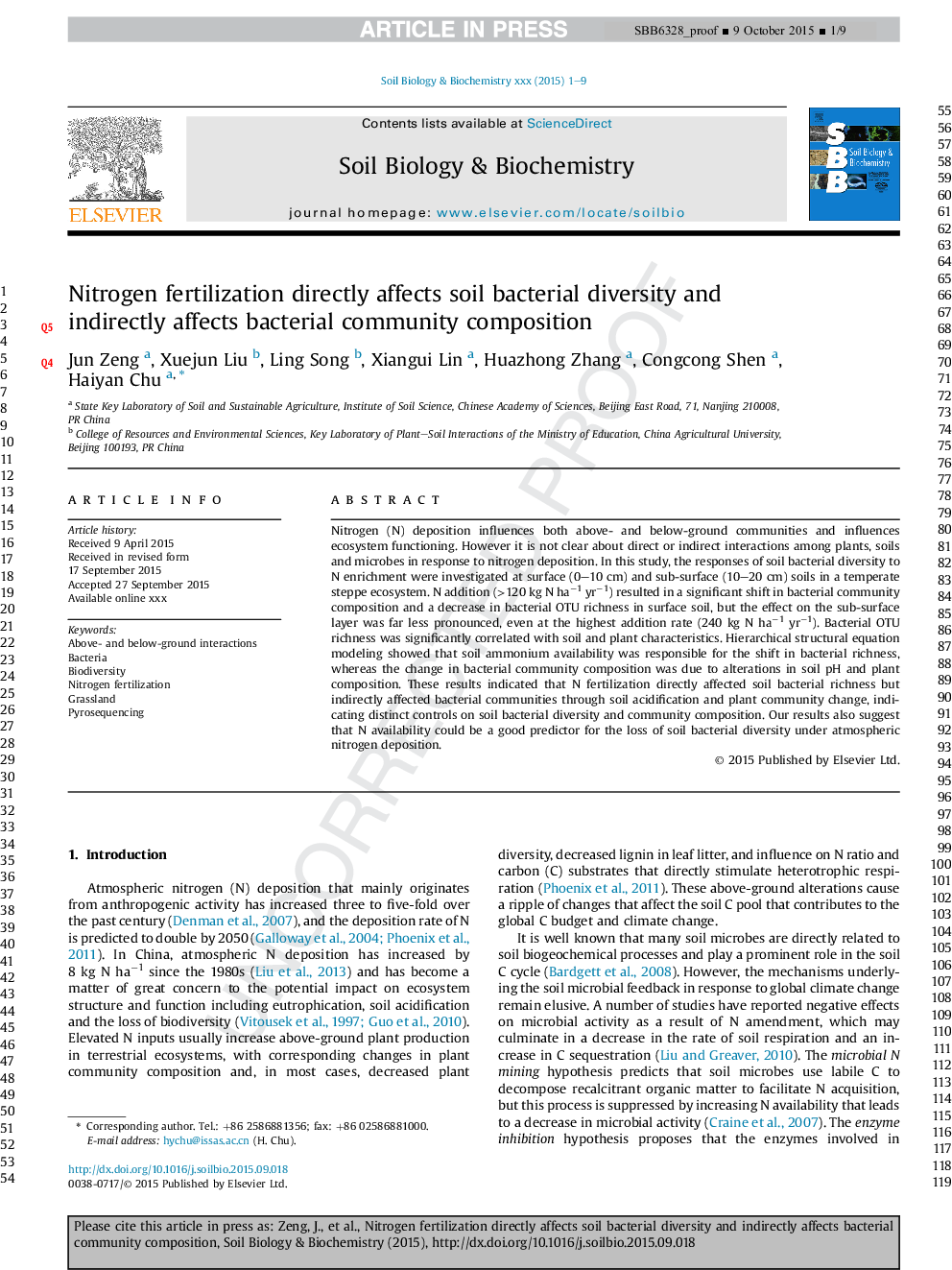| Article ID | Journal | Published Year | Pages | File Type |
|---|---|---|---|---|
| 8363640 | Soil Biology and Biochemistry | 2016 | 9 Pages |
Abstract
Nitrogen (N) deposition influences both above- and below-ground communities and influences ecosystem functioning. However it is not clear about direct or indirect interactions among plants, soils and microbes in response to nitrogen deposition. In this study, the responses of soil bacterial diversity to N enrichment were investigated at surface (0-10 cm) and sub-surface (10-20 cm) soils in a temperate steppe ecosystem. N addition (>120 kg N haâ1 yrâ1) resulted in a significant shift in bacterial community composition and a decrease in bacterial OTU richness in surface soil, but the effect on the sub-surface layer was far less pronounced, even at the highest addition rate (240 kg N haâ1 yrâ1). Bacterial OTU richness was significantly correlated with soil and plant characteristics. Hierarchical structural equation modeling showed that soil ammonium availability was responsible for the shift in bacterial richness, whereas the change in bacterial community composition was due to alterations in soil pH and plant composition. These results indicated that N fertilization directly affected soil bacterial richness but indirectly affected bacterial communities through soil acidification and plant community change, indicating distinct controls on soil bacterial diversity and community composition. Our results also suggest that N availability could be a good predictor for the loss of soil bacterial diversity under atmospheric nitrogen deposition.
Related Topics
Life Sciences
Agricultural and Biological Sciences
Soil Science
Authors
Jun Zeng, Xuejun Liu, Ling Song, Xiangui Lin, Huayong Zhang, Congcong Shen, Haiyan Chu,
